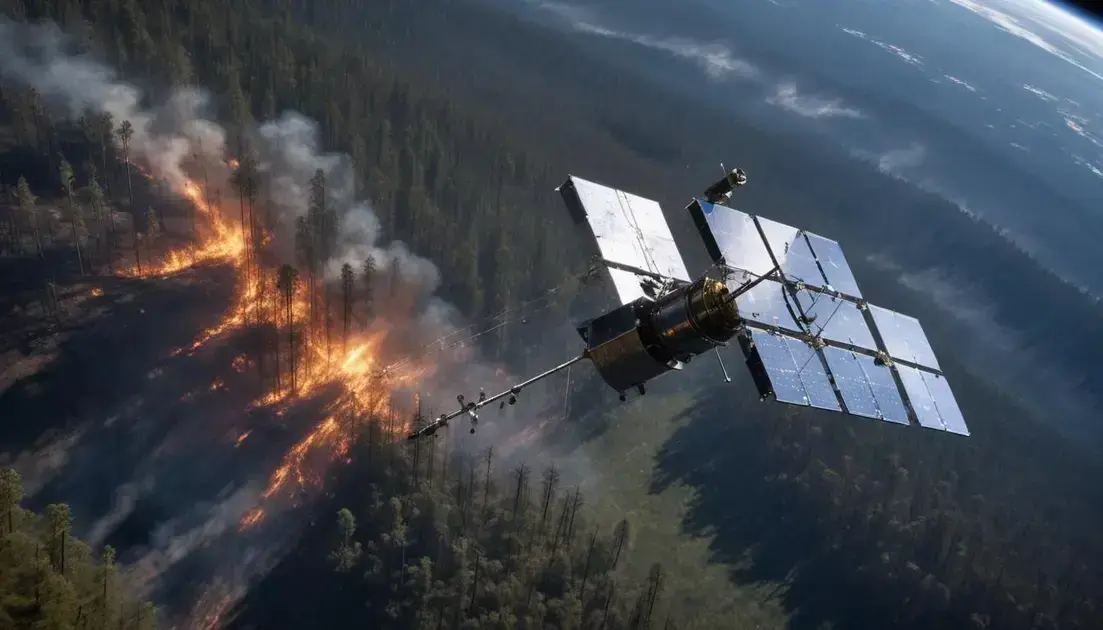FireSat: AI satellite for detecting wildfires swiftly
FireSat revolutionizes wildfire detection by utilizing AI technology to identify fires swiftly, analyze data for effective response strategies, and support climate action through improved fire management systems.
In the world of wildfire detection, FireSat emerges as a groundbreaking solution. Imagine spotting fires as small as 5×5 meters in just 20 minutes!
Revolutionary wildfire detection capabilities
The FireSat satellite represents a significant leap in wildfire detection technology. Utilizing advanced AI algorithms, this satellite can identify fires at incredibly early stages, even as small as 5×5 meters. This capability not only enhances the speed of detection but also improves overall response times during wildfire incidents.
With its cutting-edge sensors and machine learning models, FireSat analyzes vast amounts of data in real time. This enables it to determine the precise location and intensity of a fire, allowing firefighting teams to allocate resources swiftly and strategically. The increased accuracy in detecting wildfires is crucial for protecting both natural landscapes and human lives.
The system is designed to operate under various environmental conditions, making it a versatile tool in the fight against wildfires. As climate change contributes to more frequent and severe fire seasons, technologies like FireSat are becoming indispensable. They not only aid in immediate response efforts but also contribute to long-term strategies for wildfire prevention and management.
Impact on climate action and fire management
The integration of AI technology in wildfire detection plays a crucial role in enhancing climate action and fire management strategies. With tools like FireSat, emergency responders can react more swiftly and effectively to emerging threats. This rapid response is essential in minimizing damage to ecosystems and communities.
AI systems not only detect fires but also analyze environmental data to predict fire behavior. By understanding patterns and trends in fire activity, authorities can develop better risk management plans. This proactive approach allows for targeted prevention measures, ultimately conserving resources and protecting biodiversity.
Fire management is significantly improved with the insights generated by AI. For instance, the data provided can guide controlled burns and other mitigation tactics. This not only helps in reducing fuel loads but also in maintaining ecological balance within fire-prone areas. The collective aim is to create a more resilient environment against the increasing frequency of wildfires.
Furthermore, the ongoing monitoring capabilities of satellites ensure that changes in fire regimes due to climate change are tracked effectively. This information is vital for policymakers who are formulating adaptation strategies to address the impacts of climate change. By leveraging cutting-edge technology, we can ensure sustainable fire management practices that align with larger climate goals.
In summary, the role of AI in wildfire management is crucial
The new technologies, like FireSat, are transforming how we detect and respond to wildfires. With faster detection and better data analysis, we can protect our environment and communities more effectively.
By understanding fire patterns and using proactive strategies, we can manage the risks associated with wildfires. This not only helps in saving lives but also preserves our natural resources.
As we face the challenges of climate change, it is essential to keep innovating and applying advanced technologies in fire management. The future depends on how well we adapt and respond to these threats.
Embracing AI is a significant step towards a safer and more sustainable world.
Frequently Asked Questions
What is FireSat and how does it work?
FireSat is a new satellite equipped with AI technology to detect wildfires quickly and accurately, analyzing environmental data to improve response times.
How does AI enhance wildfire detection?
AI enhances wildfire detection by analyzing big data from sources like satellites to identify fire locations and predict their behavior accurately.
What are the benefits of improved wildfire management?
Improved wildfire management helps protect ecosystems, minimizes damage to communities, and optimizes resource allocation for firefighting efforts.
How does climate change affect wildfire frequency?
Climate change increases the frequency and intensity of wildfires by creating drier and hotter conditions, making it crucial to utilize advanced detection methods.
What role does real-time data play in managing wildfires?
Real-time data allows firefighting teams to respond promptly to emerging fires, improving outcomes for people and ecosystems.
Can AI technologies be integrated into existing fire management systems?
Yes, AI technologies can be integrated into existing systems to enhance their effectiveness in wildfire detection and management.






